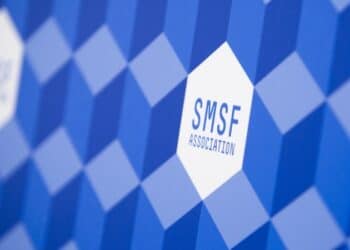In a special FirstTech podcast, Colonial First State’s head of technical services, Craig Day, spoke with SMSF Association CEO, Peter Burgess, who said the new rules will trigger a range of additional reporting obligations for SMSFs that have not yet been worked through.
Day said that with the way the rules are proposed to work, a range of different amounts will need to be taken into account for the ATO to calculate a member’s earnings and any tax liability.
For example, under the proposed rules, a member’s earnings will generally be calculated (from 2025–26) as the difference between their TSB at the end of the current year and the end of the previous year.
However, this amount then needs to be adjusted for any contributions or withdrawals made during the year, as these will distort the outcome and over or understate the member’s earnings. To do this, the rules will add back the value of any withdrawals and deducting out the value of any contributions.
“However, it’s important to appreciate it’s not just traditional contributions and withdrawals that need to be considered here. For example, the rules capture a whole range of other amounts that will also impact a member’s TSB at the end of the year, such as TPD insurance proceeds and the value of a death benefit taken as a pension,” Burgess said.
“Other amounts that also need to be controlled for include certain reserve allocations, any compensation payments received by the fund and any amounts transferred to a current or ex-spouse under a contribution or family law splitting arrangement.”
Day said the problem with a lot of these amounts is they are not currently called out and reported as separate stand-alone amounts in the SMSF annual return.
“For example, in relation to insurance proceeds, if you look at the SMSF annual return instructions, it says to report these amounts in Box O – which is for allocated earnings or losses. However, that amount also includes the value of any investment earnings and capital gains allocated to the member’s account during the year,” he said.
“So how is the ATO going to calculate earnings when actual earnings and other amounts that should be excluded are mixed in together? That only leaves two options, either the ATO will need to amend the annual return to include new fields to separately capture these amounts, at significant cost to both the ATO and industry, or the ATO will simply calculate a member’s earnings and Div 296 tax based on information included in the current annual return and then leave it to the member to object if it’s wrong.”
He added that the issue with this second option from an adviser or administrator’s perspective is that an impacted client is highly likely to expect their adviser or accountant to sort it all out for them, meaning more work, red tape, complexity, and therefore more cost.
Burgess said that that was one of the benefits of the association’s alternative proposal to calculate earnings based on a deemed rate of return for those funds that are not able to, or who choose not to, calculate actual taxable earnings, as it wouldn’t require all this additional reporting.
“Instead, the ATO could simply calculate the earnings based on amounts that are already reported in the annual return and the only involvement the SMSF would need to have is to release any Div 296 tax amounts the member wants paid from their fund,” he said.
“There’s still a fair way to go in terms of how this is going to pan out in the administration of this calculation.”
Day also said that the proposal to remove certain outstanding limited recourse borrowing amounts from TSBs for Div 296 purposes will mean there will now be three total super balance figures.
“There will be TSB that you would calculate under normal rules, then there will be two other TSB figures for Division 296 purposes. The first TSB, which will be used to calculate the proportion of earnings subject to Div 296 tax, will be the general TSB less certain outstanding LRBA loan amounts,” he said.
“The second TSB, which is used to calculate the actual earnings, uses the previous TSB but then makes additional adjustments for any contributions or withdrawals the member made during the year. Unfortunately, with complexity like this, people are bound to make mistakes and that will just add to the cost and compliance burden of these proposals.”


